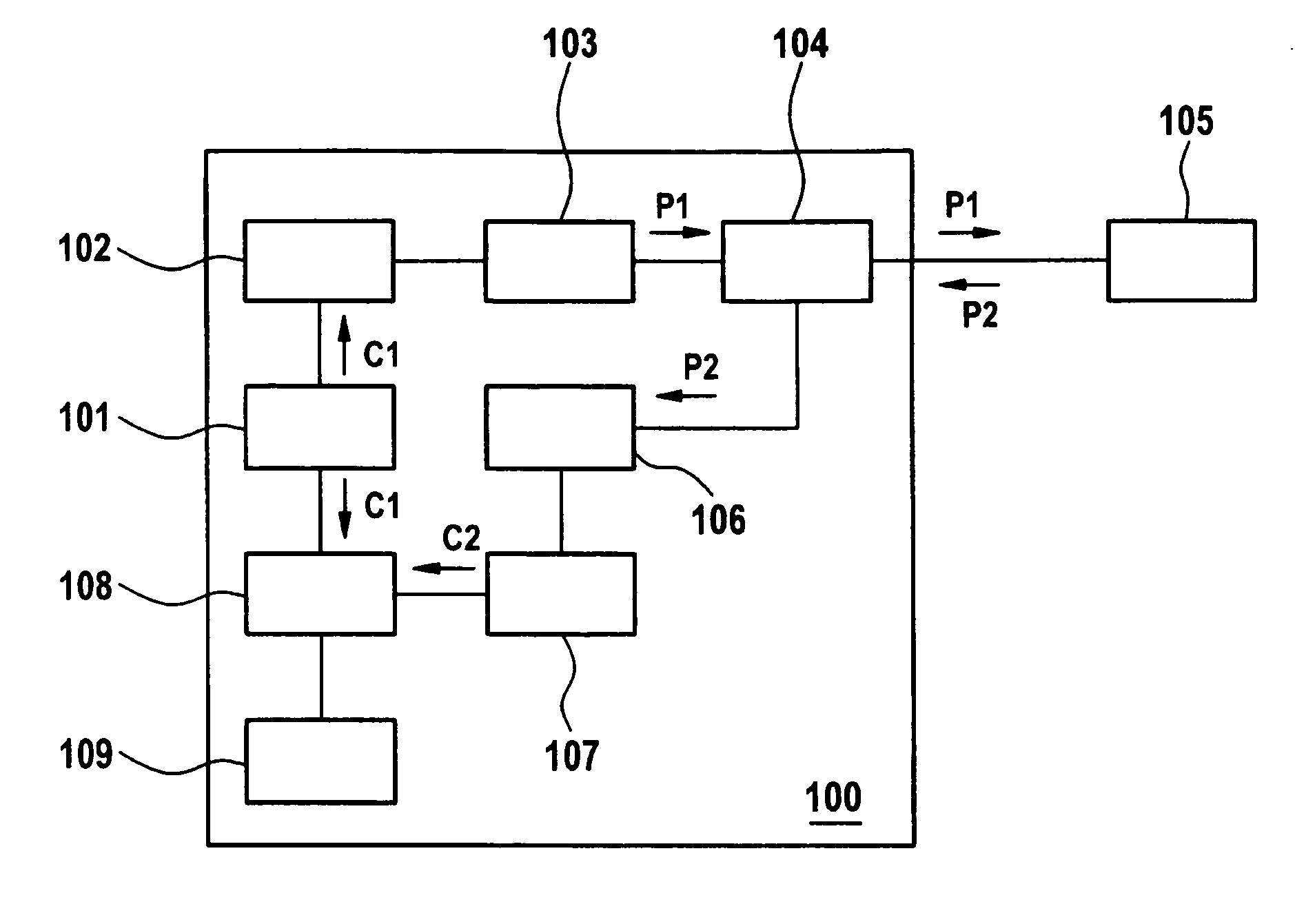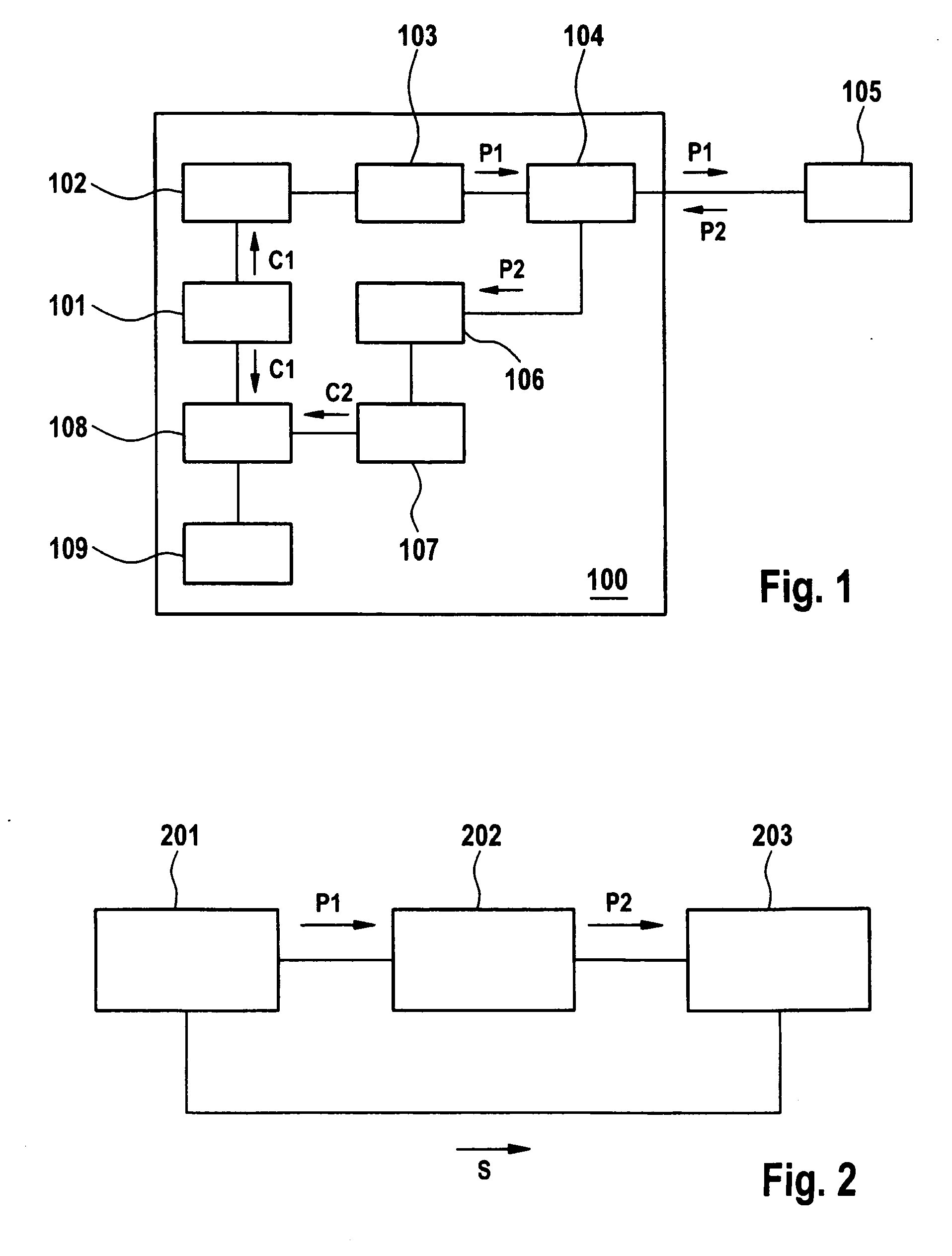Time-of-flight measurement using pulse sequences
- Summary
- Abstract
- Description
- Claims
- Application Information
AI Technical Summary
Benefits of technology
Problems solved by technology
Method used
Image
Examples
Embodiment Construction
[0022]FIG. 1 shows an exemplary block diagram of an optical measurement setup with an optical time domain reflectometer (OTDR) 100 and a device under test (DUT) 105. The OTDR 100 comprises a code generator 101, a laser driver 102, a light source 103 preferably realized as a laser transmitter, a bidirectional optical coupler 104, an optical detector 106, an Analog-to-Digital converter (ADC) 107, a digital signal processor (DSP) 108, and a main processor 109. The optical coupler connects the laser transmitter 103, the DUT 105, and the detector 106.
[0023] A first code or digital sequence C1 is stored in a memory (ROM) and fetched by the code generator 101. The code generator 101 provides a control signal to light source driver 102 so that light source driver 102 provides electrical pulses to light source 103 according to the first code C1. The electrical pulses form a determined digital sequence, causing light source 103 to generate a sequence of light pulses in accordance with the se...
PUM
 Login to View More
Login to View More Abstract
Description
Claims
Application Information
 Login to View More
Login to View More - R&D
- Intellectual Property
- Life Sciences
- Materials
- Tech Scout
- Unparalleled Data Quality
- Higher Quality Content
- 60% Fewer Hallucinations
Browse by: Latest US Patents, China's latest patents, Technical Efficacy Thesaurus, Application Domain, Technology Topic, Popular Technical Reports.
© 2025 PatSnap. All rights reserved.Legal|Privacy policy|Modern Slavery Act Transparency Statement|Sitemap|About US| Contact US: help@patsnap.com



